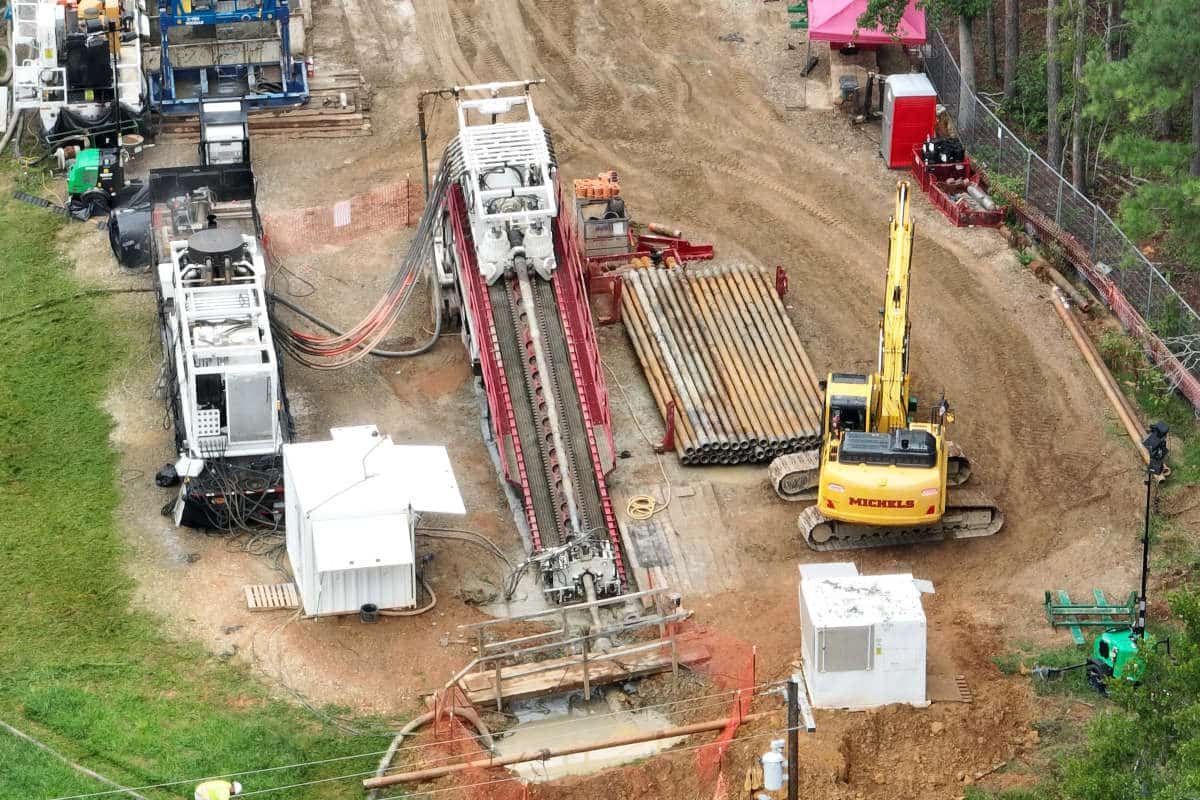Electronic Drillmaster
Today’s locating equipment consists of sophisticated state-of-the-art electronics. If the designers of the equipment have done their job properly, all the vast complexities on the inside should make things easier for the operators.
There is, however, the notion that these systems are complicated and, therefore, often difficult to troubleshoot. In this article, we will try to dispel that notion and offer up some relatively simple steps to help answer the question: Is my locating system working properly?
In most cases, the above question can be answered before any drilling or locating has started. Most locating systems consist of three components: a transmitter, a locator and, typically, a remote display at the drill rig. The transmitter sends its information to the locator and the locator sends this information to the remote display. A check of the locating system’s components can be done in a matter of minutes at the jobsite and some locating systems have self-diagnostic tests that should be a good indicator of how well the equipment is functioning. This of course does not guarantee that the system will function flawlessly during the bore but checking the equipment prior to drilling is as simple as powering up all the units and verifying that all the proper information is shown.
Since the signal originates with the transmitter, that is the obvious place to check first. Let’s suppose our bore depth is 12 ft, we will check the signal accuracy with the locator 12 ft away from the transmitter. Because a small amount of the transmitter’s signal is lost when it is placed in the drill head, it is important to note the signal strength both in and out of the drill head at the 12-ft distance. Once the signal strength at 12 ft is noted, it is time to verify the pitch and roll readings by rotating and pitching the transmitter and confirming correct readings on the locator.
As anyone who uses a cell phone can attest, there are areas where you have a poor signal. In the cell phone world, this manifests itself as garbled conversation or dropped calls. In the locating world it manifests as incomplete or missing data. Unfortunately, this is often not discovered until there are a few hundred feet of pipe in the ground and a couple of hours have been spent getting there.
One of the reasons for the missing data on a locator is due to an “area of poor signal” that we would typically refer to as an “area of interference.” It is possible to use the locator to help identify areas of interference by walking the bore path with the locator (no transmitter) prior to drilling. The locator will display the amount of signal it picks up from utilities adjacent to the bore path, which is referred to as background signal. The background signal can help identify areas where you may encounter problems locating or getting good information during drilling. The higher the background signal, the greater the likelihood you will have locating difficulties. Assuming you have identified area(s) along the bore path where there is interference, you will need to determine how badly your locating information may be affected. Take the locator and place it on the bore path with the transmitter to its side, approximately 12 ft, per our example bore depth. You can now start evaluating the effects of the interference. What does your depth reading look like? Is it reasonably accurate or is it all over the place? How is the roll/pitch data looking? Is it erratic or missing? Some locating systems have signal status bars that give you the same information as the bars on your cell phone. What do those look like?
Once drilling begins and you are having difficulties locating, there are still a couple of more steps that should be taken. We have so far been assuming that the problems are related to interference, because we tested the equipment earlier in the day. The first step is to pull back a rod or two, where you were getting good locating information. If your information clears up, then it appears that the problem is related to the interference. If the problem does not clear up, you will need to take the locator and transmitter to an area where there is little or no background noise and repeat the 12 ft test. If the issue persists, either the transmitter or locator is having a problem. A second transmitter (or receiver if you have access to one) will allow you to pinpoint where the problem lies.
By setting a side a few minutes while the drill is being set up to do some of the above equipment and background signal checks, much time and money can be saved, as well as a lot of aggravation.
Siggi Finnsson is product manager at Digital Control Inc. and is a member of the Electronic Drillmaster Advisory Board. All Drillmaster Reports are reviewed by the Electronic Drillmaster Advisory Board: Finnsson; John Bieberdorf, The Charles Machine Works Inc.; John Archambeault, McLaughlin Mfg.; and Ed Savage, Vermeer Corp.




